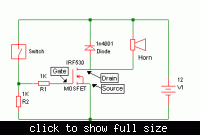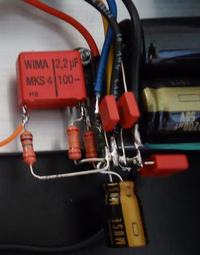thegauntlet
Newbie level 4
I want to do up a portable carhorn for my bicycle. Since they're generally 12V, I'm thinking of using 3 or 4 3.7V 2500mAh 18650 Lithium Ion batteries connected in series so it'll go up to 11.1V or 14.8V. Is it as simple as connecting the horn with battery pack and switch? I'm thinking of using a very small push button switch that is rated, 0.5A and 240V. The horn I'll be using is rated 2.5A and 12V. I'd want it to be simple to save space and weight on my bicycle.
1. What can I do to be able to use this small switch and not get a bigger switch that has a higher current rating?
2. Do I need anything extra like a relay or fuse?
3. Also if I were to use a carhorn that draws a higher current, say 3-4A would it work with the 2500mAh batteries?
I'm not an electronics student nor have a background in electronics but I'd like to start learning it myself because you can do so much with electronics, be it building or repairing your own things.
1. What can I do to be able to use this small switch and not get a bigger switch that has a higher current rating?
2. Do I need anything extra like a relay or fuse?
3. Also if I were to use a carhorn that draws a higher current, say 3-4A would it work with the 2500mAh batteries?
I'm not an electronics student nor have a background in electronics but I'd like to start learning it myself because you can do so much with electronics, be it building or repairing your own things.


